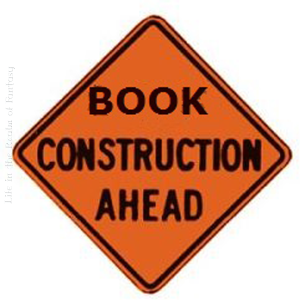 Most authors understand that there is an arc to the overall novel–the Story Arc which consists of:
Most authors understand that there is an arc to the overall novel–the Story Arc which consists of:
- Exposition, where we introduce our characters and their situation.
- Rising Action, where we introduce complications for the protagonist
- Climax, the high point of the action, the turning point of the narrative
- Falling Action, the regrouping, and unfolding of events that will lead to the conclusion
- The resolution, in which the problems encountered by the protagonist are resolved, providing closure for the reader.
Within the larger story, there are many smaller stories, “scenes” created with this same arc, that come together to create this all-encompassing drama. The way these scenes unfold is what keeps our readers interested and invested in the narrative until the end of the book.
In his seminar on the arc of the scene, author Scott Driscoll explains how the main difference in the arc of the scene vs. the overall arc of the novel is this: the end of the scene is the platform from which your next scene launches. This means each scene begins at a slightly higher point on the novel’s narrative arc than the previous scene did, driving the narrative.
In my mind, this means that novels are like Gothic Cathedrals–smaller arcs of stone support the larger arcs until you have a structure that can withstand the centuries. Each small arc of the scene builds and strengthens the overall arc of the greater novel.
These small arcs of action and reaction ensure the plot doesn’t stall and create tension that drives the story to the four cardinal points of the story arc.
Conversations are scenes that form a fundamental part of the overall arc: they begin, rise to a peak, and ebb. They inform us of something we must know to understand the forthcoming action. Conversations propel the story forward to the next scene. A good conversation is about something and builds toward something. J.R.R. Tolkien said “Dialogue has a premise or premises and moves toward a conclusion of some sort. If nothing comes of it, the dialogue is a waste of the reader’s time.”
That is true of every aspect of a scene: action, conversation, reaction. A scene that is is all action can be confusing if it has no context. If there is no silent witness (an omniscient presence if you will) a properly placed conversation can give the reader the context needed to understand the reason for the action.
A certain amount of context can arrive through internal monologue, but it must be done in such a way that the reader is not faced with a wall of italics. There are two problems with long mental conversations:
- italics are daunting in large chunks.
- it can become a thinly veiled cover for an info dump.
Plot points are driven by the the characters who have the critical knowledge. The fact that some characters are working with limited information is what creates the tension.
 Consider the concept of asymmetric information–a situation in which one party in a business transaction has more or superior information compared to another. In business, one individual’s pursuit of pure self-interest can prevent other companies from effectively entering and competing in an industry or market. He/she has the critical knowledge they don’t have and effectively eliminates his competition. He has a monopoly.
Consider the concept of asymmetric information–a situation in which one party in a business transaction has more or superior information compared to another. In business, one individual’s pursuit of pure self-interest can prevent other companies from effectively entering and competing in an industry or market. He/she has the critical knowledge they don’t have and effectively eliminates his competition. He has a monopoly.
That monopoly of information creates a crisis. In the novel, a conversation scene should be driven by the fact that one person has knowledge the others need. Idle conversation will bore your reader to tears, so ditch the smalltalk.
We deploy info, but we don’t dump it in one large chunk though–the reader must find it out at the same time as the other characters, over the first 3/4 of the novel.
We do this in small arcs that combine to form the overall story arc. Events occur, linked by conversations, forming small arcs (scenes) that support the structure of the novel.
By creating small arcs in the form of scenes, we offer the reader the chance to experience the rise and fall of tension. This is a pulse which never completely falls but is always increasing toward the high point of the book, giving the reader small rewards of emotional satisfaction along the way to the big event, the grand climax.
Credits and Attributions:
This post first appeared on Life in the Realm of Fantasy as The Arc of the Scene by Connie J. Jasperson © 2015 in July of 2015. It has been re-edited and recycled.
Image: Page one of the U.S. Patent and Trademark Office filing by Charles Darrow for a patent on the board game Monopoly. The original uploader was JohnDBuell at English Wikipedia (Transferred from en.wikipedia to Commons.) [Public domain], via Wikimedia Commons https://upload.wikimedia.org/wikipedia/commons/1/11/DarrowPage1.png








I like my creative writing students to think of dialog as action the same as a swordfight: the lunge and parry, the riposte and touche! Alas, they think people talking about whatever will fill their pages easily.
LikeLiked by 1 person
They will grow in their writing and be grateful to you for this information, Herr Professor ♥
LikeLike
I enjoyed this post. I thought your analogy of Monopoly was great.
LikeLiked by 1 person
I’m glad you liked it, Chuck!
LikeLiked by 1 person